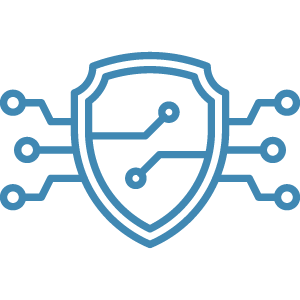“Trust no one.” This prolific statement is not just found on the lips of government officials, actors, and other high-profile individuals. It also represents an important cybersecurity policy, better known as Zero Trust. In a world where relationships build businesses, what exactly does it mean to have zero trust? And how can you implement it while still building strong, trusting relationships with your employees and clients alike?
What is a Zero Trust cybersecurity policy?
A Zero Trust cybersecurity policy is founded on the principle of “never trust; always verify.” It means that your business will not trust any user by default; instead, verification will be required by every user to gain access to your applications and systems. Zero Trust breaks down into three main priorities – risk awareness, least privileged access (i.e., users should only have access to the applications and systems needed to perform their job, no more and no less), and continuous verification.
While there are some variances in the number of pillars aptly associated with Zero Trust with some groups noting five or six pillars and others emphasizing seven, they are all very similar in their focus areas. The National Security Agency recently shared seven pillars of Zero Trust:
- User: Monitor user activity and system access with ongoing verification.
- Device: Inventory and monitor all connected devices to validate that they are updated, secure, and trustworthy.
- Network and environment: Segment, isolate, and control network environments
- Application and workload: Monitor and secure applications within your tech stack, adopting multi-factor authentication to control access.
- Data: Ensure data integrity and security through encryption, data tagging, and other data management strategies.
- Automation and orchestration: Automate security responses based on pre-defined policies and procedures.
- Visibility and analytics: Analyze events, activities and behaviors.
According to the American Council for Technology – Industry Advisory Council (ACT-IAC), Zero Trust “depends on five fundamental assertions: the network is always assumed to be hostile; external and internal threats exist on the network at all times; network locality is not sufficient for deciding trust in a network; every device, user, and network flow is authenticated and authorized; and policies must be dynamic and calculated from as many sources of data as possible.”
Why should I adopt a Zero Trust policy?
Zero Trust is a well-known cybersecurity methodology that has proven to minimize the risk of a data breach. But that’s not the only benefit. Business leaders have praised Zero Trust for delivering significant benefits, including:
- Increased security for remote or hybrid workplaces
- Enhanced user experience through multi-factor authentication (MFA) or single sign on (SSO) capabilities
- Reduced security incidents (and associated downtime)
- Greater protection against unauthorized access
- Increased data protection
- Streamlined processes
- Simplified compliance and audit activities
The list goes on. The added security associated with Zero Trust is a boon for businesses.
What steps should I take to adopt Zero Trust?
Adopting a Zero Trust cybersecurity strategy in your organization is a great step toward minimizing cybersecurity vulnerabilities. To get started, we recommend taking the following steps:
- Assess your existing users, devices, networks, and applications. As we shared in the Zero Trust pillars above, it’s important to understand your complete digital footprint and the people who will need access at any point.
- Identify the applications, devices, and networks that will need to be included in your new Zero Trust framework (hint: that’s all of them).
- Create a Zero Trust policy for your business. A good framework for this policy is as simple as information about the who, what, where, when, why, and how. Make sure your policy is clear and succinct so everyone knows what is expected.
- Assess and optimize your network. Consider things like microsegmentation, which refers to the approval of data flow based on user and resource type (e.g., someone in marketing only has access to X system or Y files). It’s also important to look at network encryption and session management.
- Establish strong authentication technology, including MFA and SSO.
- Implement least privilege access controls, granting each verified user access to the systems and applications needed to perform their job function, no more and no less.
- Establish a standard of continuous monitoring to ensure all users accessing your systems have the correct level of access, and revoke or otherwise adjust access as needed.
Zero Trust is a great cybersecurity method and can have far-reaching benefits for your business. But it can also feel overwhelming to implement and maintain, especially if you’re a small or mid-size business with resource constraints. If that sounds like you, don’t worry. At GainSide, we are committed to cybersecurity expertise so you can focus on what really matters – growing your business.
Interested in adopting a Zero Trust policy or other cybersecurity measures to strengthen your defenses against cybercrime? We’ve got your back. Reach out to one of our cybersecurity experts today!







